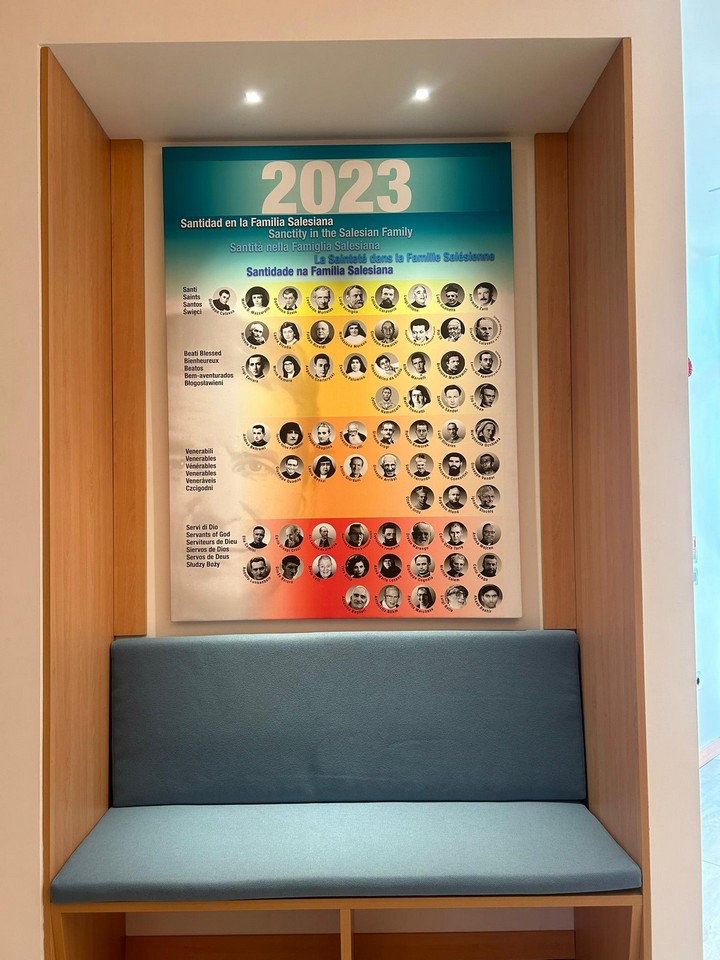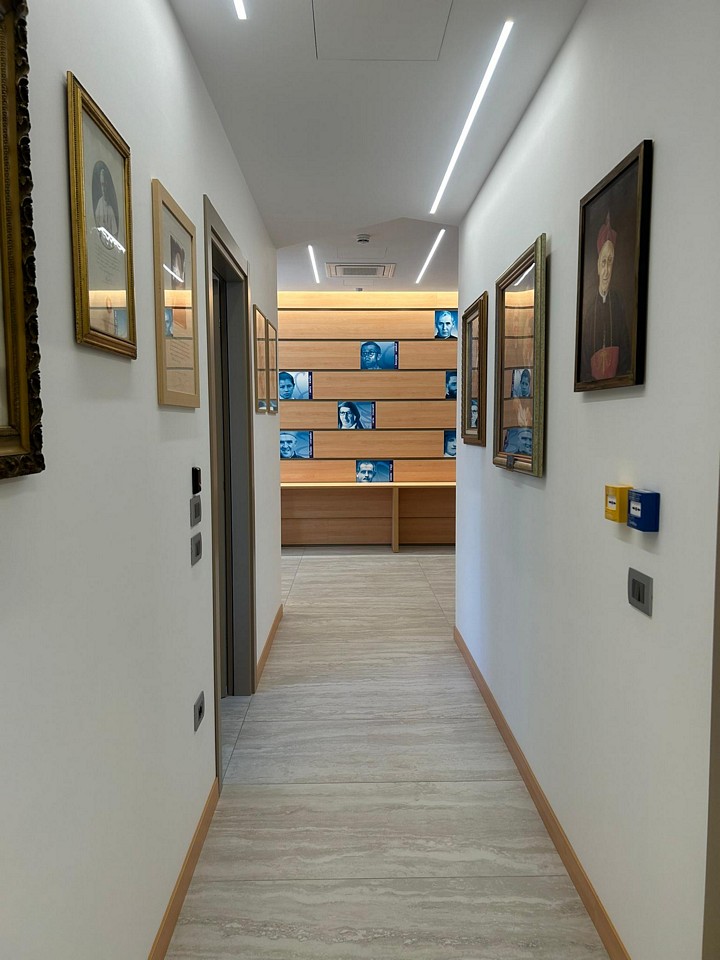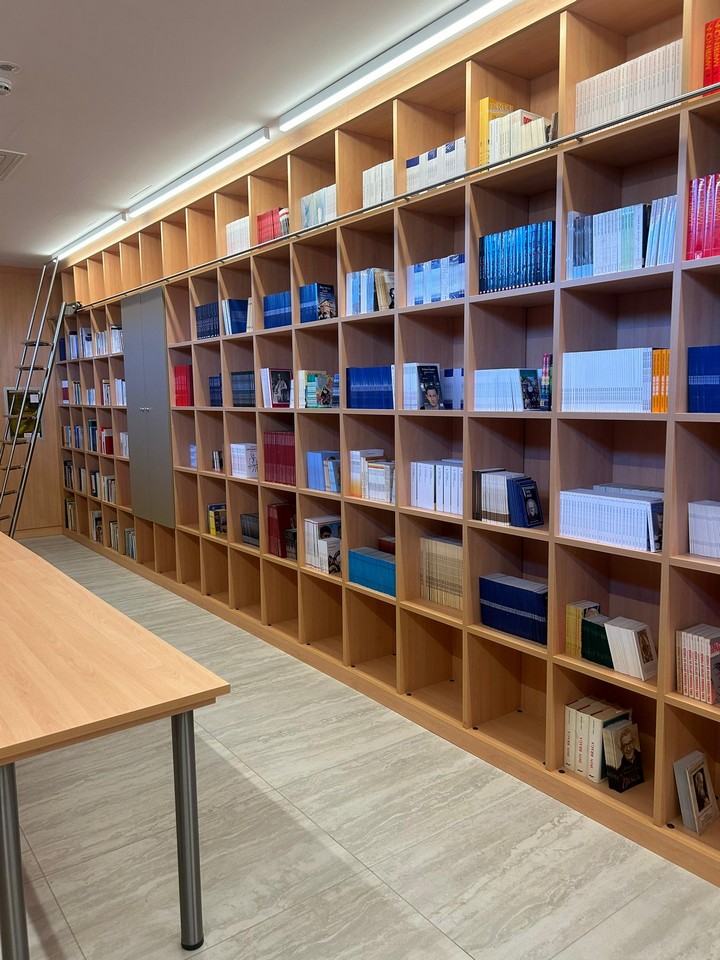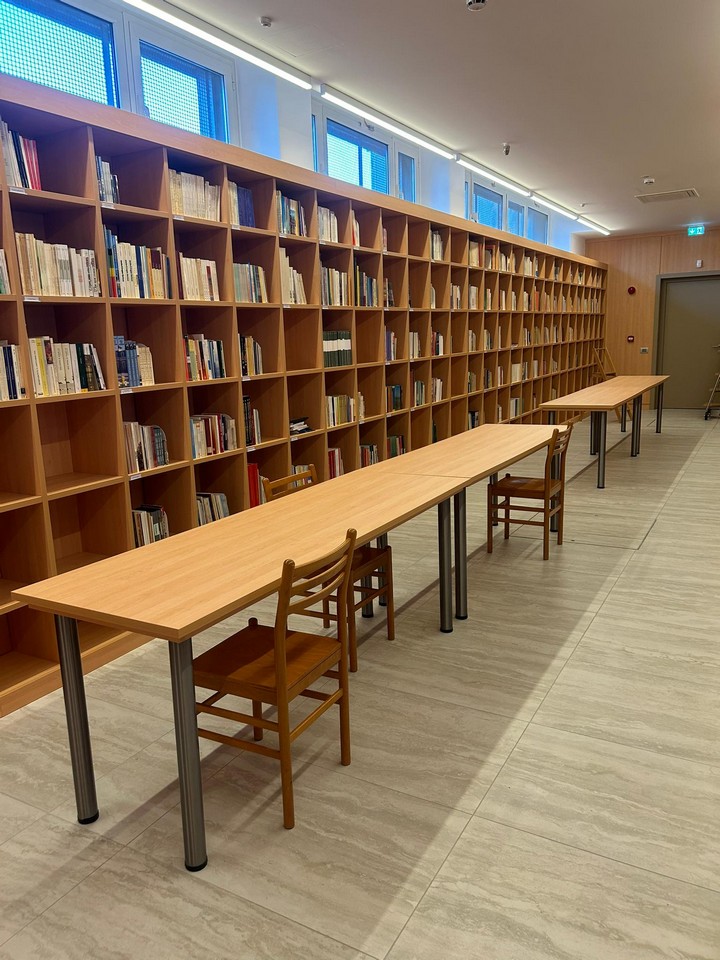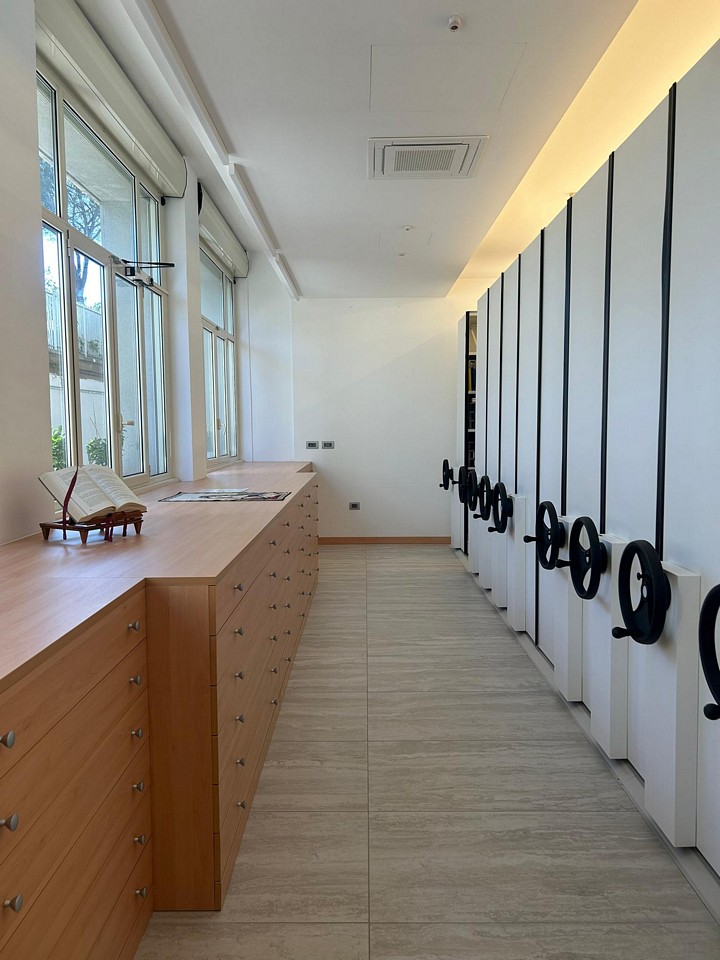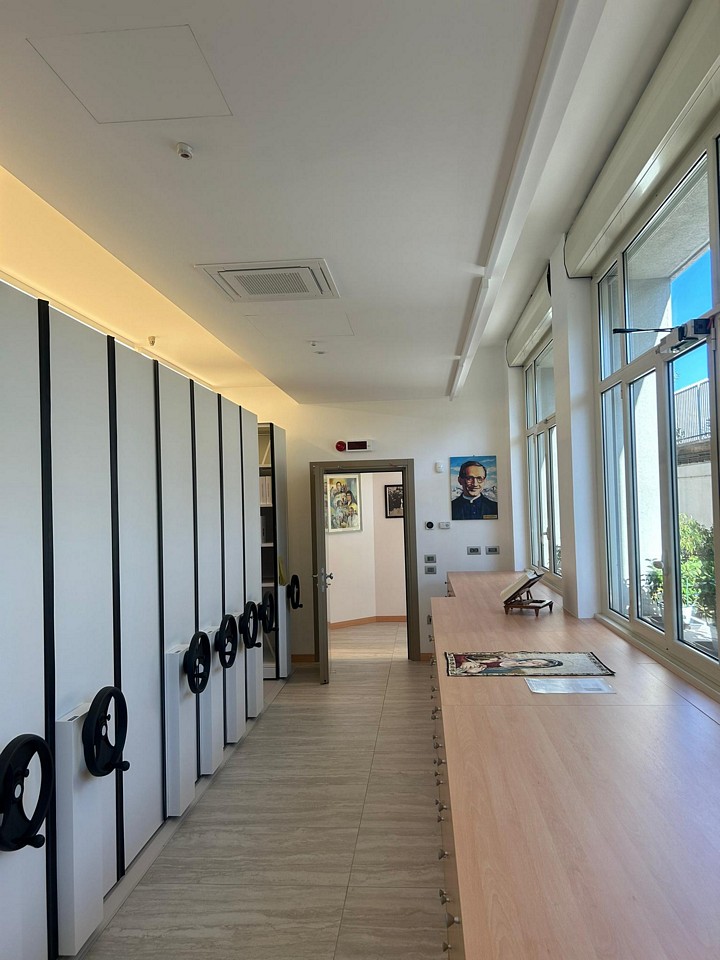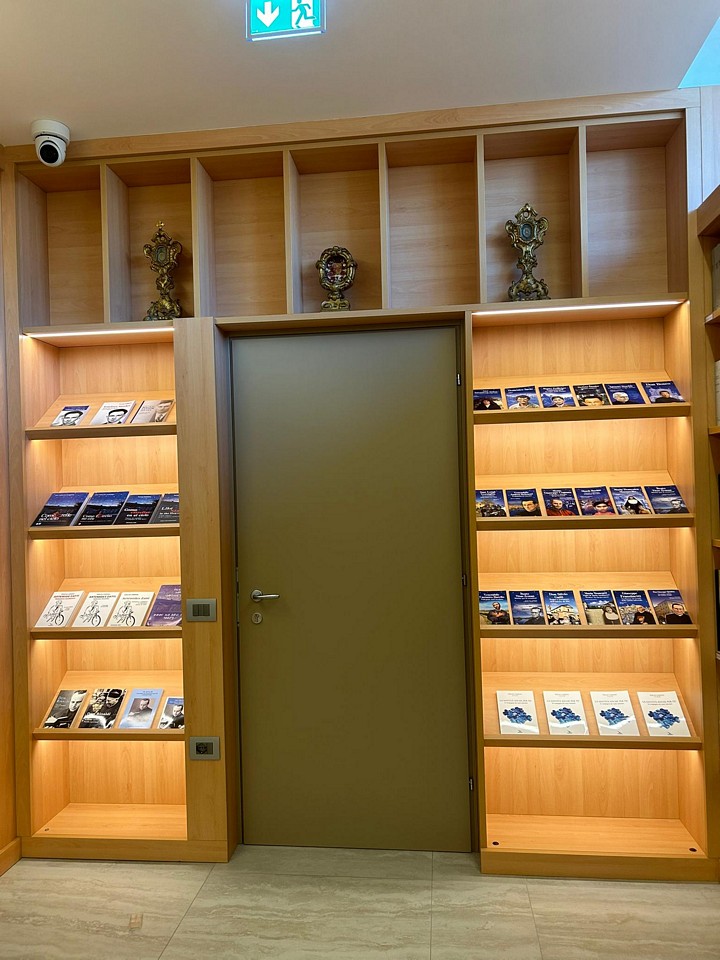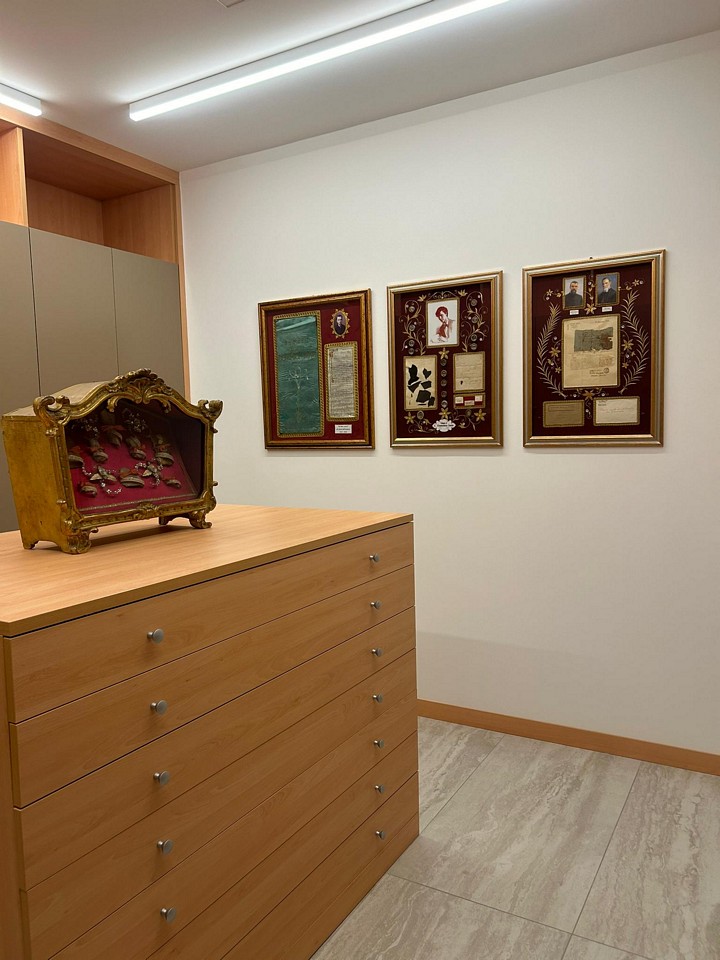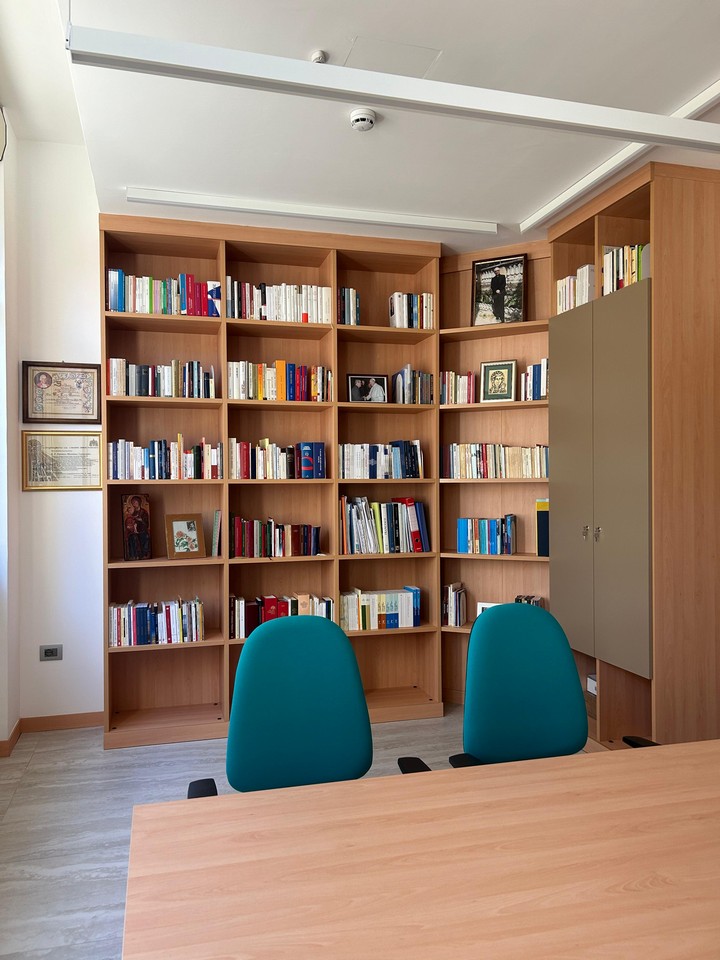Don Bosco told this dream on September 4, at the morning session of the general chapter. Father Lemoyne immediately put it into writing, which Don Bosco critically read from beginning to end, making some additions and modifications. We will record in italics those words which are in Don Bosco’s hand in the original; we shall enclose in brackets some passages introduced later by Father Lemoyne as reflections based upon further explanations given him by Don Bosco.
On the night before the feast of St. Rose of Lima [August 30], I had a dream. I was aware that I was sleeping, and at the same time I seemed to be running very, very much, so much that I was exhausted with running, talking, writing, and wearing myself out in carrying out the rest of my other regular responsibilities. While I was deliberating whether this was a dream or reality, I seemed to enter a recreation hall where I found many people standing about and discussing various topics.
A lengthy conversation centered on the hordes of savages in Australia, the Indies, China, Africa, and more especially America, who in countless numbers are presently entombed in the darkness of death.
“Europe,” said one of the speakers with much conviction, “Christian Europe, the great mistress of civilization and Catholicism, seems to have lost all interest in the foreign missions. Few are those who have enough enthusiasm to brave long journeys and unknown lands to save the souls of millions of people redeemed by the Son of God, Jesus Christ.”
Another said, “How many idolaters in America alone live miserably outside the Church, far from the knowledge of the Gospel. People keep thinking (and geographers keep deceiving them) that the American Cordillera31 is like a wall blocking off that huge section of the world. It is not so. That interminable chain of lofty mountains contains many plains a six hundred and more miles in length alone. In them are forests as yet unexplored. plants, and animals. and also ores rarely found elsewhere. Coal, oil, lead, copper, iron, silver, and gold lie hidden in those mountains where they were secreted by the all-powerful hand of the Creator for the good of humanity. 0 Andes, Andes, how steeped in wealth is your eastern flank!”
At that moment I felt an urgent desire to ask for an explanation of many things and to find out who those persons gathered there were, and where I was.
But I said to myself, Before speaking you must find out what kind of people these are. In all curiosity I gazed about at them. Practically all of these people were total strangers to me. In the meantime, as though they were seeing me for the first time, they invited me to step forward and welcomed me kindly.
I asked them, “Please tell me where we are. Are we in Turin, London, Madrid, or Paris? Where are we? Who are you? With whom do I have the pleasure of speaking?” But they all gave me vague answers while they kept talking about the missions.
During this time I was approached by a young man of about sixteen, fascinating for his superhuman beauty and aglow with a brilliance more intense than that of the sun. His garment was woven with heavenly richness, and on his head he wore a cap shaped like a crown studded with the most sparkling precious stones. Fixing his kindly gaze upon me, he showed keen interest in me. His smile reflected a love that had its own irresistible attraction. He called me by name, then took my hand and began speaking to me about the Salesian Congregation.
I was thrilled by the sound of his voice. At one point I interrupted him and asked, “With whom do I have the honor of speaking? Do me the kindness of telling me your name.”
The young man replied, “Don’t be worried. Speak with utter trust. You are with a friend.”
“But what is your name?”
“I would tell you my name if it were necessary, but I don’t have to because you should know me.” Saying this he smiled.
I took a better look at that countenance flooded with light. How handsome a face! And then I recognized the son of Count Fiorito Colle of Toulon, a distinguished benefactor of our house and especially of our American missions. This young man had died a short time before.
“Oh, it is you!” I exclaimed. “Louis! And who are all these others?”
“They are friends of your Salesians, and as your friend, I would like in God’s name to give you a bit of work.”
“Let’s see what you mean. What is this work?”
“Sit at this table and pull this rope.”
In the middle of that vast hall stood a table on which lay a coil of rope; it resembled a tape measure marked with lines and numbers. Later I also came to
realize that the hall itself was situated in South America, straddling the equator, and that the numbers marked on the rope corresponded to degrees of latitude.
I therefore took the end of the rope, looked at it, and saw that the tip was marked zero.
I smiled.
That angelic lad remarked, “This is no time to smile. Look carefully. What is written on the rope?”
“Zero.”
“Pull it a bit.”
I pulled it a little and up came the number one.
“Pull more and wrap the rope into a big coil.”
I did so, and out came the numbers 2, 3, 4, up to 20.
“Is that enough?” I asked.
“No, pull more, pull more! Pull until you find a knot,” the lad answered.
I pulled up to the number 47, where I came across a big knot. From this knot the rope continued, but it was split into smaller strands that fanned out to the east and west and south.
“Is that enough?” I asked.
“What is the number?” the youth answered.
“It’s 47.”
“What is 47 plus 3?”
“50.”
“And add 5 more?”
“55.”
“Take note: 55.”
He then told me, “Pull some more.”
“I’ve reached the end, “ I replied.
“Now then, reverse the process and pull the rope from the other end.”
I did so until I reached the number 10.
“Pull more,” the lad told me.
“There’s nothing left!”
“What? Nothing? Take a closer look. What do you see?”
“I see water,” I replied.
Indeed, at that moment I felt something very strange happening to me which I cannot explain. I was present in that hall, I was pulling that rope, and at the same time I saw unfolding before my eyes the vision of an immense country over which I was hovering like a bird in flight, and the more the cord was pulled the farther out did the view stretch.
From zero to 55 I saw a vast mainland, the end of which, after a stretch of water, broke up into a hundred islands, one of them very much larger than the others.
It seemed that the strands which came from the big knot of the rope stretched out to these islands, so that every strand was anchored to an island. Some of these islands were inhabited by fairly large numbers of natives; others were barren, empty, rocky, uninhabited; others were all blanketed in snow and ice. Toward the west were numerous groups of islands inhabited by many savages.
[It would appear that the knot situated at the number or degree of 47 symbolized the point of departure, the Salesian center, the principal mission from which our missionaries branched out to the Falkland Islands, Tierra del Fuego, and the other islands of those American countries.]
That same mainland stretched out from the opposite end of the rope, that is from zero to ten, until it reached the body of water which was as far as I could see. I thought that was the Caribbean Sea, which I was then gazing upon in a way so wondrous that I cannot describe the way I saw it.
As soon as I said, “I see water,” the young man replied, “Now add 55 and 10. What is the sum?”
“65,” I answered.
“Now join all together and you will make just one single rope.”
“And now?”
“From this side what do you see?” And he pointed to a spot on the panorama.
“To the west I see very lofty mountains, and to the east there is the sea!”
[Please note that I was then seeing a summary, in miniature as it were, of what I later saw in its real grandeur and extent, as I shall narrate. The marks numbered on the rope, each corresponding precisely to the degrees of latitude, were those which allowed me to keep in memory for several years the successive localities I visited as I travelled in the second part of this same dream.]
My young friend continued: “Very well. These mountains form a ridge or boundary. From here to there is the harvest assigned to the Salesians. Thousands and millions of people are awaiting your help, waiting for the faith.”
Those mountains were the South American Andes and that ocean was the Atlantic.
“How will we manage?” I asked. “How will we succeed in bringing all these people into the flock of Christ?”
“How will you manage? Watch!”
And in came Father Lago, who was carrying a basket of small, green figs.
“Take some, Don Bosco,” he said.
“What are you bringing me,” I replied, looking at the contents of the basket.
“I was told to bring them to you.”
“But these figs are not ready to eat; they are not ripe.”
Then my young friend took the basket, which was very broad but shallow, and gave it to me, saying, “Here is my gift to you!”
“And what am I to do with these figs?”
“These figs are unripe, but they belong to the great fig tree of life. You must find a way to make them ripen.”
“How? If they were a little bigger, … they could mature under straw, as other fruits do, but they are so small … so green. It’s impossible.”
“Well then, know that to make them ripen you have to find some way of reattaching these figs to the tree.”
“Impossible! How can it be done?”
“Watch!” And he took a fig, dipped it into a basin of blood, then immediately dipped it into another basin full of water, and said, “With sweat and blood the savages will turn back and be re-attached to the plant, thus becoming pleasing to the master of life.”
But to accomplish this will take time, I thought to myself. Then I said aloud, “I don’t know what else I can say.”
That dear youth, reading my mind, continued, “This success will take place before the second generation comes to an end.”
“Which will be the second generation?”
“Don’t count the present generation. There shall be another, and then another.”
I spoke in utter confusion, baffled, spluttering, as I heard the magnificent destiny awaiting our Congregation, and I asked, “But how many years does each of these generations include?”
“Sixty.”
“And then?”
“Do you wish to see what will happen then? Come!”
Without my knowing how, I found myself in a railroad station. A huge crowd was gathered there. We boarded a train.
I asked where we were. The young man replied, “Take notice! Watch carefully! We are traveling along the Andes. You have your road also open to the east all the way to the sea. It is another of the Lord’s gifts.”
“And when shall we go to Boston, where they’re waiting for us?”
“Everything at its own time.” Saying this, he took out a map in which the diocese of Cartagena stood out prominently. [This was the point of departure.]
As I was studying the map, the engine blew its whistle and the train began to move. As we went along my friend kept talking much, but, because of the train’s noise, I could not fully hear him. Nevertheless, I learned many very wonderful and new things about astronomy, navigation, meteorology, minerals, fauna and flora, the topography of those areas which he explained to me with marvellous precision. Meanwhile he seasoned his speech with a courteous and at the same time gentle familiarity which showed his love for me. From the very start he took my hand and kept me always very affectionately in his tight clasp to the very end of the dream. I placed my other hand lightly on his, but his hand seemed to disappear undermine as though it had evaporated, and my left hand held merely my right. The young man smiled at my useless efforts.
In the meantime I was looking out the carriage window, and I saw whiz before me various astonishing regions: forests, mountains, plains, very long majestic rivers which I could not believe to be so wide at points so far from their mouths. For more than a thousand miles we skirted the edge of a virgin forest which has not been explored even today. My gaze took on a marvellous power of vision. There were no obstacles that could block its view. I don’t know how to explain what strange phenomenon took place in my eyes. I felt like someone standing on a hilltop who sees stretching out before him a vast panorama; if he holds even a tiny strip of paper close to his eyes, he can see little or nothing, but if he drops it or moves it up or down, his gaze can reach out to the farthest horizon. This is what happened to me because of the extraordinary insight that was given to me, but the difference was this: every now and then as I set my gaze upon one spot and that one spot whizzed past me, it was as if a series of curtains were being raised and I saw stretching out before me interminable distances. Not only did I see the Andes when I was a long distance from them, but that chain of mountains even stood out in those immeasurable plains and was clearly visible to me in every tiny detail. [The mountain ranges of Colombia, Venezuela, the three Guyanas, Brazil, and Bolivia, even to their farthest boundaries.]
I was then able to verify the correctness of the words I had heard at the beginning of my dream in the grand hall straddling the equator. I could see into the very bowels of the mountains and into the remotest hidden recesses of the plains. Before my eyes lay the incomparable riches of those countries, which will one day be discovered. I saw countless mines of precious metals, inexhaustible caverns of coal, oil deposits so abundant as have never yet been discovered elsewhere. But that was not all. Between 15- and 20-degrees latitude lay a very broad and very lengthy body of water that had its origin from the end of a lake. Then a voice kept repeating to me, “When the mines hidden in the midst of these mountains will eventually be dug out, here will appear the promised land flowing with milk and honey. Its wealth will defy belief.”
But that was not all. My greatest surprise was to see how the Andes in several places reverted upon themselves and formed valleys of whose existence present day geographers have not even an idea. They think that in those areas the mountainsides are sheer walls. In those valleys and hollows, some of which extended as much as six hundred miles, lived crowded countless peoples who have not yet come in contact with Europeans, entire nations completely unknown to us.
The train kept rushing along, turning here and there and finally coming to a halt. A fair number of passengers got off at this point to continue their journey through the Andes to the west.
[Don Bosco indicated Bolivia. The station was probably La Paz, where a tunnel could open the way to the Pacific coast and link Brazil with Lima by means of a junction with another railroad.]
The train began to move again, heading always forward. As on the first leg of our journey, we traversed forests, drove through tunnels, passed over gigantic viaducts, plunged into narrow mountain gorges, skirted lakes and marshes on bridges, forded wide rivers, hurtled over grasslands and prairies. We passed along the banks of the Uruguay River. I always thought it was a short river, but instead it is very long. At one point I saw the Parana River wending its way to the Uruguay as though it were bringing it the tribute of its waters; but, after somewhat paralleling it for a stretch, it pulled away, forming a huge elbow.
Both these rivers were enormous. [From these sketchy descriptions it would seem that this future railroad line would go from La Paz to Santa Cruz, then head through the only opening which is to be found in the Cruz della Sierra mountains and is crossed by the Guapay River; it will ford the River Parapetf in the Chiquitos plains of Bolivia, then cut across the extreme northern limit of the Republic of Paraguay; thence it will enter the Province of Sao Paulo in Brazil and then head for Rio de Janeiro. From some intermediate station in the Sao Paulo Province, the railroad line will then probably go between the Parana and Uruguay Rivers and connect Brazil’s capital with the Republic of Uruguay and the Republic of Argentina.]
The train kept forging its way, turning here and there, and after a long time it made a second stop. Another large number of people got off there and made their way westward through the Andes. [Don Bosco indicated the province of Mendoza in Argentina. Hence the station was probably Mendoza, and the tunnel led to Santiago, capital of the Republic of Chile.]
The train resumed its journey across the Pampas and Patagonia. The cultivated fields and the few homes scattered here and there showed that civilization was overtaking the wilderness.
At the entrance of Patagonia we passed over a branch of the Colorado River or the Chubut River [or perhaps the Rio Negro?]. I could not ascertain its flow of current or its direction, whether toward the Andes or toward the Atlantic. I kept trying to solve this puzzle but could not orient myself.
Finally we reached the Strait of Magellan. I looked all about me. We alighted. Before me lay Punta Arenas. For several miles the ground was cluttered with mounds of coal, boards, railroad ties, huge piles of minerals; the fields were partially covered with flocks, partially tilled. Long lines of freight cars filled the railroad tracks.
My friend pointed all these things out to me. Then I asked, “And now what are you trying to tell me with all this?”
He answered: “What is now merely a project will one day be reality. In time to come these savages will be so domesticated that they shall willingly come for instruction, religion, civilization, and trading. What elsewhere excites wonder among people will here assume such stupendous proportions as to arouse more astonishment than does anything else now.”
“I’ve seen enough,” I replied. “Now take me to see my Salesians in Patagonia.”
We turned back to the station and reboarded the train to return. After traveling a very long distance, the train stopped before a town of considerable size.
[Possibly on the 47th parallel, where at the very beginning of the dream I had seen the big knot in the rope.] There was no one at the station to meet me. I got
off the train and immediately found the Salesians. I saw many houses with many people in them; more churches, schools, various hospices for children and youths, artisans and farmers, and a school for girls which taught a variety of domestic arts. Our missionaries were caring for both the young and the adults.
I walked into their midst. They were many, but I did not recognize them, and none of my old sons were among them. All were looking at me in bewilderment, as though I were new to them, and I asked them, “Don’t you know me? Don’t you know Don Bosco?”
“Oh, Don Bosco! We know him by reputation, but we have only seen him in photographs. Do we know him personally? Certainly not.”
“And Father Fagnano, Father Costamagna, Father Lasagna, Father Milanesio – where are they?”
“We did not know them. They are the ones who came here long ago in the past, the first Salesians to come to these lands from Europe. But so many years have gone by since they died.”
I gasped in wonder at their reply. “But is this a dream or reality?” I clapped my hands, I felt my arms, I shook myself, and I really heard the sound of my clapping and I could feel my body, and I kept telling myself I was not asleep.
This visit was but the matter of an instant. Having witnessed the marvellous progress of the Catholic Church, of our Congregation, and of civilization in those lands, I thanked Divine Providence for graciously using me as an instrument of His divine glory and the salvation of so many souls.
Young Colle meanwhile signalled me that it was time to go back. So, we said good-bye to my Salesians and returned to the station, where the train was ready to depart. We boarded, the whistle blew, and away we headed northward.
Something new struck my sight and made me wonder. The region of Patagonia closest to the Strait of Magellan, between the Andes and the Atlantic, is not as wide as geographers claim it to be.
The train rushed along at breakneck speed, and I thought we were crossing the provinces of the Republic of Argentina which already had been civilized.
Our journey took us through a virgin forest, interminably broad and interminably long. At a certain point the train stopped and our gaze fell upon a very sorry sight indeed. A huge crowd of savages was gathered in a forest clearing.
Their faces were deformed and dirty, their bodies covered with what seemed to be animal skins sewed together. They surrounded a man who was bound and seated on a rock. He was very obese, having been deliberately fattened by the natives. The poor fellow had been taken prisoner and from the sharpness of his features seemed to belong to a different race. Hordes of savages were interrogating him, and he was telling them of the adventures he had encountered in his travels. Suddenly one of the natives arose, brandishing a shaft of iron which was well sharpened, though not a sword; he threw himself upon the prisoner and with one blow cut off his head. All the train passengers crowded at the doors and windows gazing upon the scene in horror. Colle himself was looking in silence. The victim uttered a shrill scream as he was struck. Those cannibals then threw themselves upon the body bathed in a lake of blood and, slicing it up, threw chunks of warm and still quivering flesh upon nearby fires, let them roast awhile, and then ate them half cooked. At that poor man’s scream, the train began to move and gradually resumed its breakneck speed.
For hours at a stretch it skirted the shores of a huge river. At times it was on the right bank, at times on the left. I could not tell through the window what bridges
we used to make these frequent crossings. Meanwhile along the banks here and there we spotted numerous tribes of savages. Each time we saw them, young Colle kept saying, “This is the Salesian harvest! This is the Salesian harvest!”
We then entered a region packed with wild animals and poisonous snakes of bizarre and horrifying shapes. They swarmed over the mountainsides and hill slopes; they blanketed the hilltops, the lakeshores, the riverbanks, the plains, the gullies, the cliffs. Some looked like dogs with wings and were extraordinarily bloated [gluttony, impurity, pride]. Others were gigantic toads eating frogs. We could see certain lairs full of animals different in shape from ours. All three species of animals were mixed together and snarled dully as though about to devour each other. We could also see tigers, hyenas, lions, but they were not the same as those of Asia and Africa. My companion then spoke to me. Pointing out those animals to me, he exclaimed, “The Salesians will tame them!”
The train was now approaching its starting point, and we were not far from it. Young Colle then drew out a map of astounding beauty and told me, “Would you like to see the journey you have just made? The regions we have traversed?”
“Yes, of course,” I answered.
He then explained the map on which all South America was detailed with marvellous exactness. More than that, it showed all that had been, what then was, and what would be in those regions, but without confusion, rather with such a clarity that one could instantly see all at one glance. I immediately understood everything, but, due to the onrush of so many things, that clarity lasted but an hour, and now my mind is just one big jumble.
While I was looking at that map and waiting for the youth to offer me some explanation – I was overwhelmed by the astounding things I was looking at – I thought I heard our Coadjutor Quirino ring the morning Angelus, but, on awakening, I realized I was hearing the bell strokes of the parish church of San Benigno. The dream had taken the entire night.
Don Bosco concluded his account with these words: “The Salesians will draw the people of [South] America to Jesus Christ by the sweetness of St. Francis de Sales. It will be a most difficult task to teach the savages a moral way of life, but their children will easily yield to the words of the missionaries and live in towns with them; civilization will supplant savagery, and thus many Indians will enter the flock of Jesus Christ.”
(BM XVI, 303-312)
